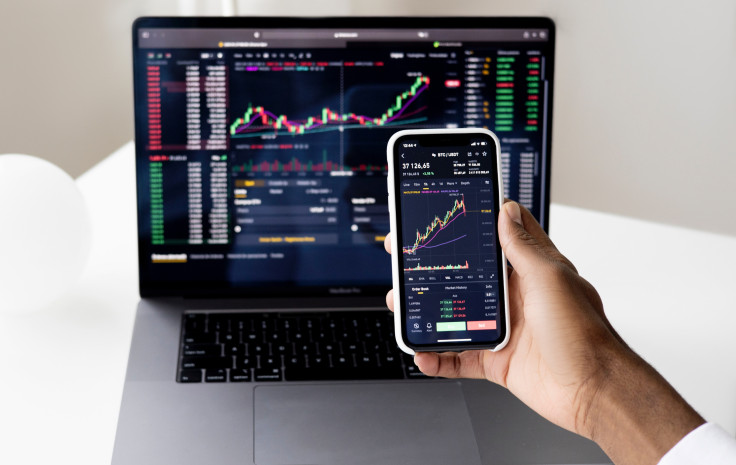Crypto Market In Liquidity Drought With 'Extreme Apathy And Boredom' As 'Prevailing Sentiment'

KEY POINTS
- The supply of Bitcoin, Ether and stablecoins has been on a consistent decline since April 2022
- This could be due to the implosion of Terra ecosystem, according to the report
- The total USD volume of Bitcoin transactions dropped to a daily average of $2.44 billion
The cryptocurrency market is currently experiencing a liquidity drought, with prevailing sentiment largely characterized by extreme apathy and boredom, according to on-chain market intelligence firm Glassnode.
Both on-chain and off-chain volumes have plummeted to historical lows, resulting in a significant liquidity crunch in the cryptocurrency market. Glassnode suggests that this situation is reminiscent of the pre-bull levels of 2020.
With the market returning to a "remarkably narrow trading range," characterized by compressed volatility and light volumes, Glassnode notes that the prevailing sentiment is one of "extreme apathy and boredom."
The report highlights that the supply of Bitcoin, Ether, and stablecoins has been consistently declining since April 2022. This decline can be attributed to various factors, including the spectacular implosion of the Terra ecosystem, the blockchain firm behind the algorithmic stablecoin TerraUSD (UST).
Additionally, the report points out that the failure to pass on higher interest rates to non-yielding stablecoins is another factor contributing to the decline in the supply of these crypto assets.
At the beginning of 2023, Bitcoin and Ether saw a net inflow of capital. However, all three crypto assets, including stablecoins, reverted to either neutral or negative inflow by late August, suggesting uncertainty and stagnation, as highlighted in the report.
The total USD volume of Bitcoin transactions dropped to a daily average of $2.44 billion, which is reminiscent of the levels seen in October 2020, Glassnode's on-chain metrics showed.
The daily trading volume of Bitcoin also recorded a historical low in the off-chain derivatives market when it fell to $12 billion for the first time since the recorded lows of 2022.
The report, however, highlighted some divergence in the Bitcoin options market with its trading volume increasing, which it said: "could be a reflection of the market preferring to use the leverage and capital efficiency of options to express their view during a period of tighter overall liquidity conditions."
According to Glassnode, despite the subdued state of the digital assets market, the trend of "hodling" remains strong. The report notes, "HODLing certainly remains the primary market dynamic, which signals both steady conviction among existing holders and the likelihood that these investors are the only ones who remain."
Matteo Greco, a Research Analyst at Fineqia International, a publicly listed digital asset and fintech investment business, shares a similar analysis. He points out that the liquidity in the market is at its lowest levels since the end of 2020 and the beginning of 2021.
"Liquidity in the market is at the lowest levels since the end of 2020/beginning of 2021. This is due to a multitude of reasons, which can mainly be found in two broad categories: on one hand, the Luna-UST collapse in May 2022 and the FTX bankruptcy in November 2022 represented two main 'internal' factors that scared investors and market participants and brought away liquidity and capitalization from the digital assets market," the research analyst told International Business Times in a note.
"In addition, FTX bankruptcy also caused the exit from the market of Alameda, one of the most important market makers. Since then, the digital assets market was never able to recover to the same level of liquidity and currently the available liquidity is strongly concentrated both as a matter of platforms and assets," Greco added before saying, "Indeed, top 8 exchanges hold almost 100% of the liquidity available, and this liquidity is spread almost exclusively amongst the top10 digital assets."
Greco also noted that "the macroeconomic conditions are favoring a liquidity decrease in the financial markets. Central banks strongly raised interest rates in the last 18 months, making it more expensive to borrow money and reducing the incentives to invest in the stock/digital asset market in favor of government bonds, which are perceived as risk-free investments and currently have yields up to 5% in the US."
To address these challenges and increase liquidity, Lixin Liu, CEO of Account Labs, suggests that the crypto industry needs to expand beyond the polarization of hardcore HODLers and the risk-averse crowd.
"The real challenge here is that crypto needs to expand beyond the polarity of hardcore HODLers and the risk-averse crowd. To truly flourish, crypto finance requires practical, everyday use cases. Think about being able to send money across borders as effortlessly as sending a text message – that's the kind of real-world utility that could boost usage and, consequently, liquidity," Liu told IBT.
"Right now, it feels like the crypto community is divided into two camps: those who want to hold onto their assets forever and those who are risk-off. We need to bridge this gap and get money moving actively within the crypto space so that the industry is not mainly about speculative trading; we need crypto to be a part of our daily lives," the executive who manages the company's external relations and leads critical initiatives spanning corporate growth, growth strategy, and finance added.
"In this regard, Ethereum is making strides with Account Abstraction. By enhancing the user experience and security of Web3 accounts via smart contract wallets, this exciting development could simplify everyday financial transactions for crypto to gain mainstream adoption, and ultimately increase liquidity for the market," the Account Labs CEO further said.
Liquidity across the digital asset market continues to dry up, with both on-chain and off-chain volumes reaching historical lows.
— glassnode (@glassnode) September 11, 2023
Whilst HODLing remains the market preference, a significant proportion of the supply is teetering on the edge of falling into a significant… pic.twitter.com/twInh0OqKf
© Copyright IBTimes 2025. All rights reserved.






















